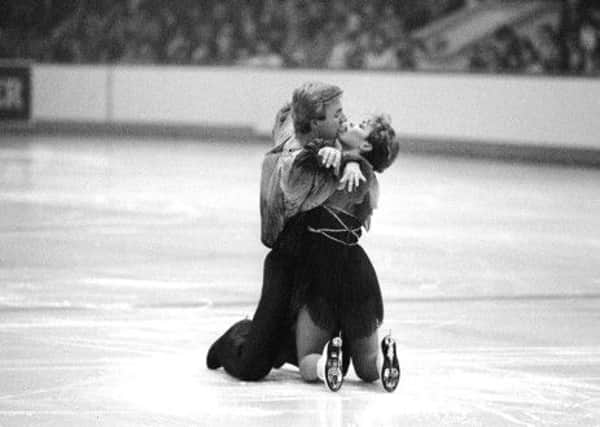Eddie the Eagle and Torvill and Dean just part of the thrills and spills of Winter Olympic history


Since the first Winter Games in Chamonix in 1924, when 258 athletes from 16 nations took part, to the worldwide gathering that will take place in Sochi, Russia, from Friday onwards, the Summer Games’ younger brother has carved out a special place in sport’s rich tapestry.
The 22nd Winter Olympics includes a host of new freestyle skiing and snowboarding events to enthrall the watching public, to sit alongside old favourites such as ice hockey, biathlon, bobsleigh and the blue riband downhill skiing.
Advertisement
Hide AdAdvertisement
Hide AdThose staples of the winter sports diet have been providing golden moments ever since that inaugural Games in the French Alpine region of Chamonix, with the first to strike Winter Olympic gold being American Charles Jewtraw in the 500m speed-skating.
Other early history makers were Sweden’s Gilles Gafstrom, who won his third straight men’s figure skating title, having previously triumphed in 1924 and the 1920 Antwerp Summer Games, when that sport was part of the sunshine programme.
As with the Summer Games, the majority of early versions were held in Europe, with the odd transatlantic venture resulting in a low-key event, as was the case at Lake Placid, upstate New York, in 1932 when the global depression dominated the mood.
And as with the Summer Games of 1936 in Berlin, the Winter event in the Bavarian region of Garmisch was similarly used a propaganda exercise by Adolf Hitler.
Advertisement
Hide AdAdvertisement
Hide AdSt Moritz and Oslo hosted the first two Games afer the war before in 1956 in Cortina d’Ampezzo, Austria’s Toni Sailer produced one of the finest displays of skiing ever when he won all three events by a huge margin. The Games marked the debut of the Soviet Union, which would go on to win more golds than any other nation.
Their ice hockey team for the 1960 Games in Squaw Valley, California, were professional, which caused a controversy that only died down when the amateur American team beat them in the final.
The Innsbruck Games four years later were shrouded in sadness following the deaths of Australian skiier Ross Milne and Polish-born British luger Kazimierz Kay-Skrzypeski in training runs in the week prior to the Games.
In 1968, French great Jean-Claude Killy won gold in downhill, giant-slalom and slalom disciplines although his win in the latter was controversial. Austrian Karl Schranz was allowed a re-run after claiming a mysterious ‘man in black’ had crossed his path during his slalom run, forcing him to take evasive action. Given a re-start, Schranz beat Killy’s time, but was subsequently disqualified.
Advertisement
Hide AdAdvertisement
Hide AdSapporo was the first Far East host of the Winter Games before a return to Grenoble in 1976 saw the emergence of greats like downhill racer Franz Klammer and US figure skater Dorothy Hamill.
Arguably the most memorable stories unfolded in the 1980s.
The Lake Placid Games began under the shadow of politics, with US President Jimmy Carter saying his nation would boycott the Summer Games to take place later in the year in Moscow because of the Soviet Union’s invasion of Afghanistan. The Cold War had taken a grip on sport, and provided an emotional backdrop to the ‘Miracle on Ice’, when the amateur US ice hockey team denied the Soviet Union a fifth consecutive gold medal.
Sarajevo four years later will for ever be remembered for the perfect sixes awarded to British ice dance duo Jayne Torvill and Christopher Dean for their mesmeric performance to Ravel’s Bolero, an event that drew a television audience of 25 million back home.
The Calgary Games saw a collision between mega stars and massive underdogs. Italian skier Alberto Tomba, Finnish ski jumper Matti Nykanen and German figure skater Katarina Witt were the stars while the crowds were also thrilled by the exploits of British ski jumper Eddie ‘The Eagle’ Edwards and the Jamaican bobsleigh team.
Advertisement
Hide AdAdvertisement
Hide AdSix years later Lillehammer hosted the first Games outside a Summer Olympic year, with the build-up hit by the revelation that the bodyguard of figure skater Tonya Harding had attacked rival Nancy Kerrigan with an iron bar prior to the US trials.
Bjorn Daehlie’s status as the greatest cross-country skiier of all-time was further enhanced in Nagano before a huge audience back home saw Rhona Martin and the women’s curlers win gold for Britain at the Salt Lake City Games of 2002, which were held amid the backdrop of a bribery scandal.
Turin and Vancouver delivered thrills and spills but neither really shone out from the crowd, like so many had in the past.
Who will make the headlines in Sochi?